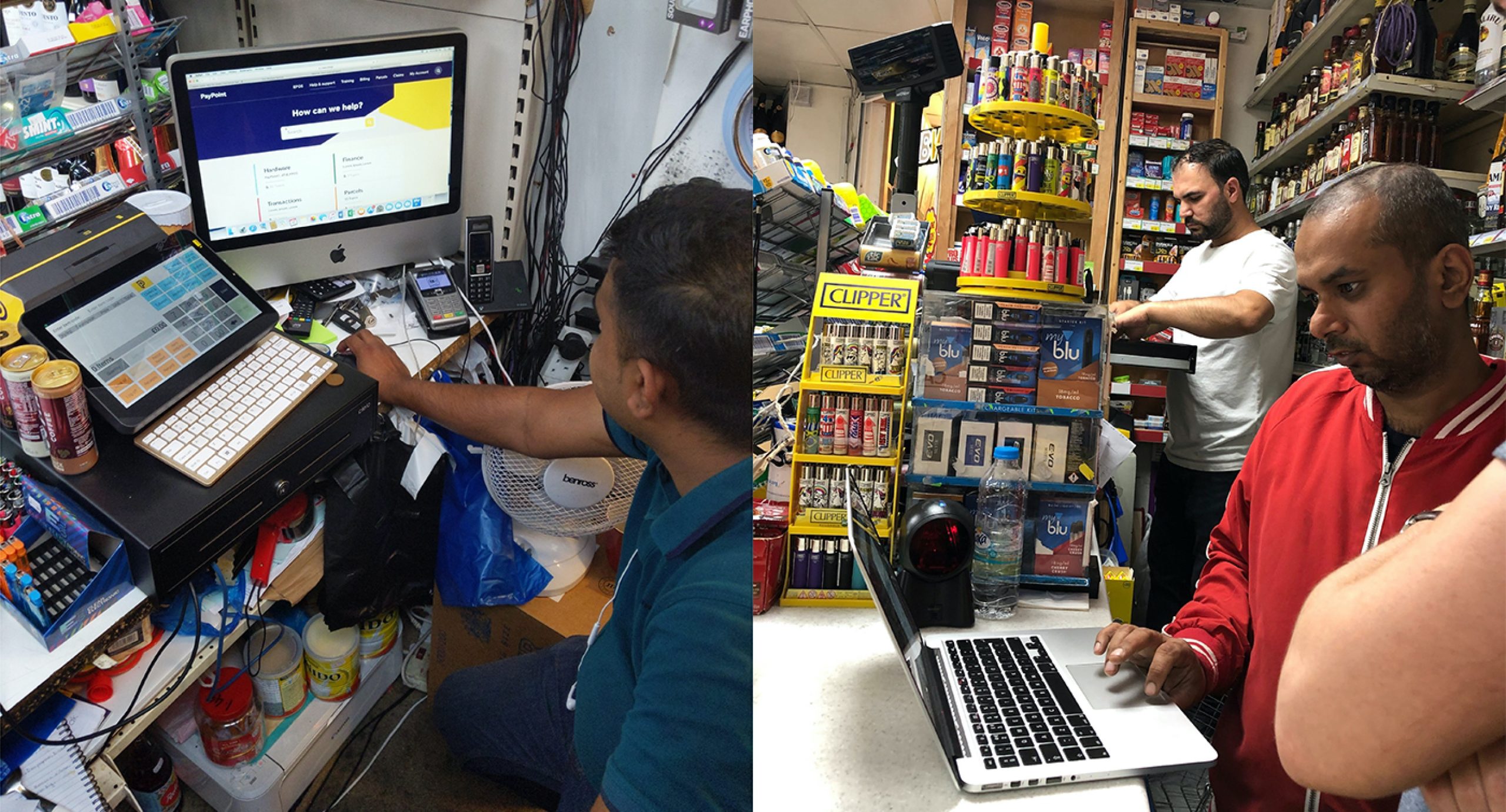In-person UX research
PayPoint is an in-store payment service that operates over 27,500 stores in the UK. When undertaking UX research before reworking the UX for their PayPoint One terminal we wanted to find out how to make using it as easy as possible. This terminal handles all the day-to-day operations that are required when running a store such as stock management and sales.
Learn all about the improvements we made to this business critical tool
We learned plenty from running online testing user research via Maze, but we wanted to dive deeper. To get to know the pains that people were experiencing up-close and in real life, we decided to spend a day out visiting different convenience stores.
Immersive user research
Due to the small size of a typical convenience store, their place at the centre of the community and the multitude of services they offer, busy times get very busy. Any delay or problem with the terminal means holding up customers trying to quickly grab bread, milk and other essentials (like Mars bars 😉). Not ideal at all.
Equipped with nothing more than a Mac and our revised UI, our team took to the stores and experienced what it’s really like at the sharp end of retail.
Having a queue building up whilst you work out how to complete a transaction, update your inventory and try not to ignore the customer you’re supposed to be serving isn’t easy!

When it comes to UX research, context of use is key. You can’t completely know until you’re right there.
In-person experience
We could’ve just spoken to PayPoint stakeholders, who could have shared selected feedback they hear from shopkeepers, but something would still have been missing from our understanding.
The best way to actually find out what it was like to use the terminal was to be there and sense the sights, sounds and smells that people using it everyday encountered – with no filters.
The PayPoint interface is used by everyone working in a store, from the owner to someone who helps out a couple of hours per week. It’s a product that by its very nature has multiple use cases from the off, and being in stores themselves really brought that home.
How parents read and why it matters: testing with content for Action for Children
We took a trip to a nursery to test a new parenting product in context 👶
Who uses immersive research?
Immersive UX research has been used by many brands across the world to gain unfettered insight and find out surprising things. Here are just a couple of our favourites:
IDEO
We all know how people brush their teeth, right? Well, no. When Oral-B approached design firm IDEO in the 1990s to design new toothbrushes for kids, IDEO had a strange request. They wanted to go into customers’ homes to observe how their children were actually holding the handles.
It turns out children grasp toothbrushes very differently to adults, and that the existing ‘skinny, straight but smaller’ design was completely inappropriate.
Look at any children’s brush these days and you’ll see that thanks to IDEO’s discovery they’ve all got fat, squishy handles to suit a child’s less advanced dexterity.
Deliveroo
The fast food delivery company’s CEO Will Shu may be worth billions these days, but he still goes out delivering every fortnight to totally understand the experience of his riders.
His most unexpected discovery was how little interaction customers want or need with the people who bring their food –
“I’ve learned that no one ever wants to talk to you when they’re hungry. They just shut the door and that’s about it.”
Is immersive research always necessary?
Spending hours in the field is not always feasible though, and we aren’t saying this is always the best way to tackle your project. There are time and money constraints and it’s not always realistic or necessary to undertake such hands-on user research.
Four ways to win at user research
Find out which user research methods we rate, and when to use them.
In this specific situation, we needed to feel the actual pains and full-on workday of the convenience store workers. We were able to address unexpected issues and improve the product with first-hand experience.
Tailoring your research methods to the problem you’re tackling is always a smart approach.